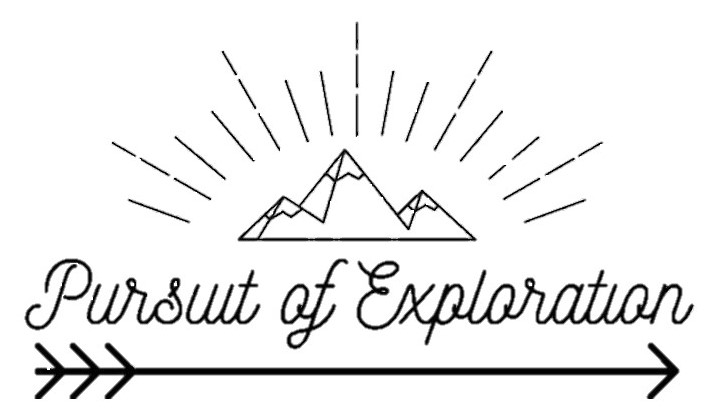The Pacific Crest Trail (PCT), officially known as the Pacific Crest National Scenic Trail, is a hiking trail spanning 2650 miles (4,265 km) from Mexico to Canada. It leads through the mountain ranges of California, Oregon, and Washington, hence the name “crest”. Some people decide to hike it in sections, whereas others decide to tackle it in one go, which is called a thru-hike and takes an average of 5 months to complete. Every year 700-800 people attempt to thru-hike the PCT and only 14-34% of hikers succeed. The PCT is a challenging hike due to its remoteness, elevation changes, and the vast variability in landscapes.

The PCT is wild! Quite literally and figuratively. The trail meanders through 25 National Forests, 51 Wilderness Areas, many state and county parks, and some of the United States’ prime National Parks, namely: Sequoia National Park, King’s Canyon National Park, Yosemite National Park, Lassen Volcanic National Park, Crater Lake National Park, Mount Rainier National Park, and North Cascades National Park. As a bonus, the PCT overlaps with the famous John Muir Trail for 170 miles (which is 80% of the JMT!).
The trail undergoes a huge range in elevation. The PCT goes up, down, up, down, up, up, down, and sometimes seemingly neverendingly up, up, up! The lowest point of the PCT is in Oregon’s Cascade Locks at 140 ft (43 m) and the highest point is on California’s Forester Pass at 13,153 ft (4,009 m). The overall elevation change of the trail is a whopping 420,880 ft (128,284 m). With a lot of elevation change also comes big variability in landscapes and the flora and fauna contained within those landscapes.
If hiking northbound, the PCT begins in the desert. It’s not a flat, empty, sandy expanse as what would typically be expected of a desert. Instead, the desert section has a lot of different plants and animals, and already has several thousand feet of elevation gain and loss everyday. There are lizards skittering around and snakes slithering on the ground. There are also a lot of butterflies and hummingbirds, and LOTS of flies and bees. Plenty of beautiful cacti, annoyingly spiky shrubs, and in some sections, Joshua trees! The PCT also notoriously goes through the western corner of the Mojave desert. It’s hot, dry, and water is constantly at the forefront of your mind.



After the desert, comes the Sierra Nevada mountain range. Rounded granite rocks, high mountain passes, stunning alpine lakes, and a plethora of gorgeous alpine flowers. The views witnessed in the Sierras are absolutely stunning. In my naiveté I had no idea California had such stunning and remote mountains, it feels like you’re in the Swiss alps! But with great beauty also comes great challenges; exhausting elevation gains and losses, dangerous water crossings, sketchy ridgelines, and the possibility of experiencing altitude sickness.



After the Sierra Nevada comes Northern California, or commonly referred to as NorCal. Many hikers experience the “NorCal blues” when hiking this section, because after witnessing impressive mountain peaks every day throughout the Sierras, NorCal is a little anti-climactic. The PCT crosses large sections of burnt forest which can be really disheartening to hike through since it’s hot, there’s limited shade, there are a lot of downed trees, and it’s relatively lifeless. Hikers also need to watch out for poison oak and poodle-dog bush – plants prevalent in these areas that cause a severe skin rash if touched. But despite this, NorCal still boasts some beautiful landscape features such as picturesque views of Mt. Shasta, the Marble Mountains, Klamath Mountains, and some cool volcanic features such as acidic lakes, geysers, and the Subway Cave.



The start of Oregon is exciting – finally a new state to explore after spending so much time in California! Oregon is the “flattest” section of the PCT, so a lot of hikers enjoy the daily big miles they can accomplish with their freshly minted legs of steel. The PCT meanders through beautiful mossy forests which are a refreshing change after experiencing California’s dry-adapted vegetation for so long. The infamous Crater Lake and Mt. Hood are Oregon’s most iconic features along the PCT. But Oregon isn’t all fun, there are notorious “ankle-breaker” sections of the trail composed of volcanic rocks that make traverses really slow and tedious.



Washington is a hiker favourite – it’s got it all! Forests abundant in ferns, mosses, and mushrooms, and mountains boasting stunningly rugged peaks and dramatic valleys. Home to deer, elk, bears, and cougars, Washington’s remote wilderness creates great opportunity for wildlife sightings. The PCT traverses near Mt. Adams, Mt. Rainier, and Glacier Peak – three of Washington’s five iconic volcanic mountains. But Washington also harbors typical Pacific Northwest weather; overcast clouds, rain, fog, did I mention rain? If timed right, you can experience a greater number of clear, sunny days, but the further you push into Fall, the greater chance of less-than-ideal hiking weather.




Have I convinced you to hike the PCT yet?? Thru-hiking the PCT is an epic adventure for those who dare try it. It’s challenging, but the spectacular views and the amazing people you meet along the way make all the pain and difficulty worth it!



Wonderful report and amazing photography !
Such an achievement you made it through many challenges along the way. This takes a special person to endure all unknown situation and enjoy the adventure ! Well done Isabel
So proud of you 🙂
Thanks so much Beate!!
Thank you for sharing. Your pictures are breathtaking! You are an amazing one of a kind young lady. It’s unimaginable how much mental and physical fortitude you must have to finish the PCT.
Thank you, I really appreciate it!
Very well written and documented.
I think you should become a adventure hiker influencer. Get a bunch of Sponsors and make a lot of money.
You certainly have what it takes. Good job.
Thank you!!
I’m amazed.